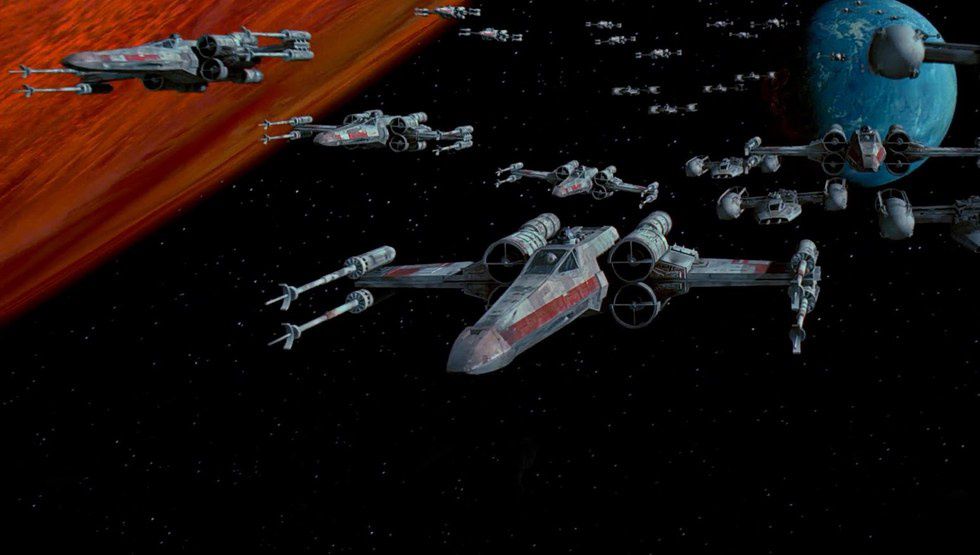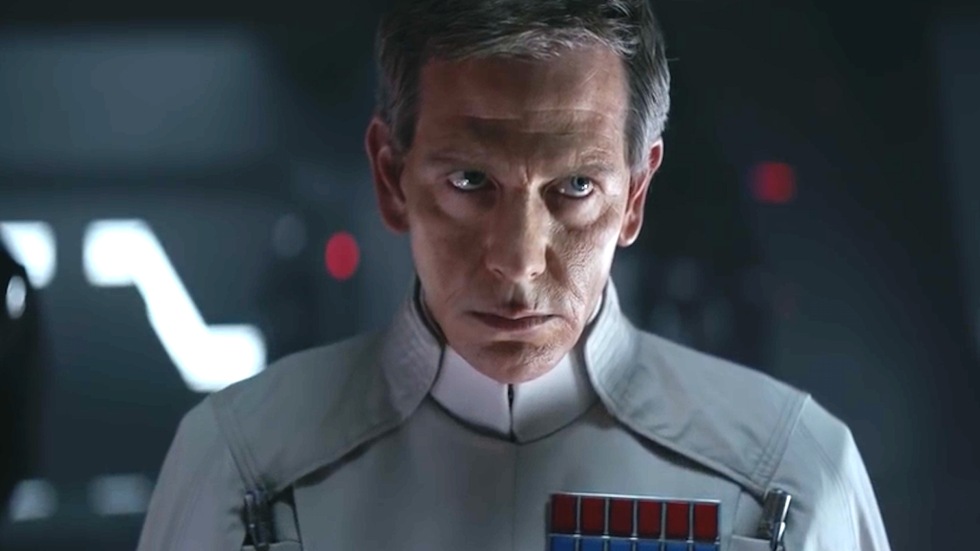Just to clarify, this is the best “Star Wars” film we’ve seen since 1980’s “The Empire Strikes Back.” Particularly this is the best script we have seen since then. These are my two favorite films in the franchise and it comes down to the fact that both of them focus on character more than any others. They don’t care about trade embargos or moisture farming. They focus on emotion. This is what has always made “Star Wars” unique from other science fiction franchises which are often indulgent in their cold examinations of science and biopolitics. We joke that there are “Star Trek” people and “Star Wars” people, and it’s ridiculous because there is a very large crossover, but “Star Wars” has always distinguished itself as magical space opera.
It’s a franchise for children and adults alike. Disney seems to understand this better than series creator George Lucas does. The two films Disney has added to the saga have both played on emotions, expectations, and nostalgia in a strategic almost Machiavellian way.
It would be easy to compare this film to other films in the “Star Wars” amalgam, but perhaps a better comparison would be films such as “Saving Private Ryan” or the original “Magnificent Seven.” These are team films where character is king. Each of “Rogue One’s” characters from Orson Krennic (Ben Mendelson) to Donnie Yen’s Chirrut Îmwe get a believable and interesting motivation, but moreover, they are given dichotomies, and scenes where we can get a glimpse into their character rather than their characterization. Characterization is giving Anakin Skywalker a scar for no apparent reason or giving Mace Windu a purple lightsaber.
Character moments are the ones where we, the audience, witness who they are under pressure. What will they do in the most difficult moments of their lives?
Character moments are seen in “Empire Strikes Back” when Leia tells Han, “I love you.”
Han replies, “I know.” That’s character. That’s what writers Chris Weitz and Tony Gilroy masterfully achieved in the creation of “Rogue One.” Chirrut Îmwe could easily have been a badass blind guy (see Daredevil) whose existence was purely for entertainment purposes, and Orson Krennic could have been another mustache twirling bad guy tying a heroin up the railroad tracks. But instead, Weitz and Gilroy take their time to tell us a realistic, adult story, but in a fantasy world.
Orson Krennic may be the most relatable villain presented in the “Star Wars” franchise. The scene in Darth Vader’s castle on Mustafar shows Krennic’s spine and character. For him, his spine is to be recognized for his greatness. This scene is fantastic for Krennic’s character, despite Darth Vader’s shitty pun at the end.
For Donnie Yen and Jiang Wen, “Rogue One,” represents their first major foray into the American market. Yen previously worked on films such as “Blade 2,” and “Shanghai Knights,” for which he also designed the fight choreography, but I can’t help but feel that this is his first major American work. These two actors are both Chinese, but from very different backgrounds. Yen is from Hong Kong, a semi-autonomous state of the People’s Republic, while Jiang Wen hails from the mainland and is a sixth-generation filmmaker. Both castings are appeals to the two Chinese markets, of which mainland cinema is the fastest growing market in the world. In 2007 there were 3,500 cinema screens in China. As of 2015 the number has jumped to 31,000. The Chinese market is the future and Disney recognizes that.
Even as an out and out “Star Wars” and Marvel fan, I still complain about the Blockbuster syndrome currently plaguing the major studios. The previews for “Rogue One” featured these franchises: “Fast and Furious,” “The Mummy,” “Transformers,” “Planet of The Apes,” “Dunkirk,” and “Spider-Man: Homecoming.” I will see the last two. Why do the first three exist? Answer: They make lots of money. We, the audience have allowed the major studios to shell out bullshit after bullshit in these franchises and for some reason we continue to see these laughable films which fail to deliver story, interesting cinematography, or any sort of intellectual or entertaining discussion. Why are we no longer spending money on artistic classics such as “The Godfather,” which took the box office in 1971 with $127,000,00 domestic. Perhaps the world is a more complex place, thus we crave simpler, more by the books stories. But the fact of the matter is that Hollywood spectacle seems to have replaced our fascination with character and nuance. There are certainly films which tell the Blockbuster tale well, most recently “Rogue One,” “Deadpool,” and “Doctor Strange,” but these seem to be the exceptions. Other films in this same genre have failed to deliver such a quality of storytelling. Yet, they have continued to deliver successful box office results. Film critics and critical consensus sites have attempted to act as watchdogs, but it seems that they have proven unsuccessful.
“Rogue One,” may be a “Hollywood” blockbuster, but it is hardly typical and it is certainly not surface level. It boasts a strong story, interesting visuals, and above all else, it showcases strong, multidimensional characters. So if you are still looking for a holiday film at the cinema, give this one a shot.













































